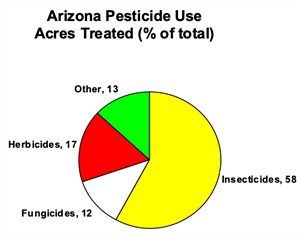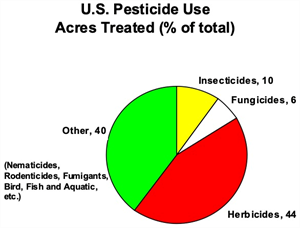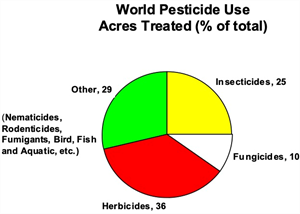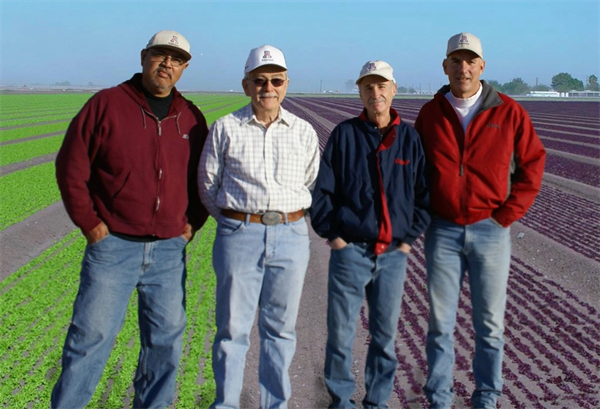
Soils with excess soluble salts, saline soils, and/or excess sodium (Na+) concentrations (sodic) are a natural feature of desert soils and common in arid land agriculture. This is primarily due to an accumulation of soluble salts near the soil surface as water evaporates from the soil surface.
Saline soils are a problem in crop production systems because of the sensitivity to salinity of crop plants, although plants vary in their degree of sensitivity. The period of greatest plant sensitivity to salinity is in the early stages of development, during germination and stand establishment.
Sodic soils are a problem in crop production systems because of the adverse effects of excess sodium on soil structure, causing a dispersion of soil particles and the breakdown of soil aggregates. This leads to poor water infiltration and percolation in the soil profile.
Some basic points associated with saline and/or sodic soils and management are outlined in the following sections.
https://www.nrcs.usda.gov/wps/PA_NRCSConsumption/download/?cid=nrcseprd589210&ext=pdf
Sodic soil reclamation does require an amendment that will facilitate the chemical exchange of Na+, usually from a calcium (Ca2+) source, such as gypsum (CaSO4).
An effective and straightforward method of calculating a leaching requirement (LR) can be calculated with the following equation that was presented by the USDA Salinity Laboratory (Ayers and Westcot, 1989).
Leaching Requirement (LR) Calculation:
Where:
ECw = salinity of the irrigation water, electrical conductivity (dS/m)
ECe = critical plant salinity tolerance, electrical conductivity (dS/m)
i.Drip irrigation systems are commonly very limited in this respect.
i.Examples: wheat, alfalfa, sudangrass, etc.
I hope you are frolicking in the fields of wildflowers picking the prettiest bugs.
I was scheduled to interview for plant pathologist position at Yuma on October 18, 2019. Few weeks before that date, I emailed Dr. Palumbo asking about the agriculture system in Yuma and what will be expected of me. He sent me every information that one can think of, which at the time I thought oh how nice!
When I started the position here and saw how much he does and how much busy he stays, I was eternally grateful of the time he took to provide me all the information, especially to someone he did not know at all.
Fast forward to first month at my job someone told me that the community wants me to be the Palumbo of Plant Pathology and I remember thinking what a big thing to ask..
He was my next-door mentor, and I would stop by with questions all the time especially after passing of my predecessor Dr. Matheron. Dr. Palumbo was always there to answer any question, gave me that little boost I needed, a little courage to write that email I needed to write, a rigid answer to stand my ground if needed. And not to mention the plant diagnosis. When the submitted samples did not look like a pathogen, taking samples to his office where he would look for insects with his little handheld lenses was one of my favorite times.
I also got to work with him in couple of projects, and he would tell me “call me John”. Uhh no, that was never going to happen.. until my last interaction with him, I would fluster when I talked to him, I would get nervous to have one of my idols listening to ME? Most times, I would forget what I was going to ask but at the same time be incredibly flabbergasted by the fact that I get to work next to this legend of a man, and get his opinions about pest management. Though I really did not like giving talks after him, as honestly, I would have nothing to offer after he has talked. Every time he waved at me in a meeting, I would blush and keep smiling for minutes, and I always knew I will forever be a fangirl..
Until we meet again.
Interested in staying up to date on the latest robotic ag technologies? The International Forum for Agricultural Robotics, FIRA, hosts two annual conferences focusing on robotics and autonomous farming solutions, one in Europe and one in the USA. They recently uploaded recordings of sessions from the 2024 World FIRA, held in Toulouse, France to YouTube. The site also contains playlists of themed breakout sessions from previous European and USA events (over 400 videos total). Highlights include panel discussions with growers and company executives, robot demos, and inno’pitches from startup companies. Most of the content, particularly from the USA events, is high quality and worth viewing.
Check it out by clicking here or on the image below.
There are many different types of pests that affect crops grown in Arizona. The three types of pests most often cited as the source of most problems are insects, diseases and weeds. These are the same types of pests that are cited as causing the major agricultural pest problems across the U.S. and worldwide. Graphs 1-3 illustrate, however, that the relative importance of these types of pest problems differ in Arizona from the rest of the U.S. and worldwide. In terms of pesticide use, worldwide herbicides accounted for 36% of total usage, insecticides 25%, and fungicides 10% and other 29% (nematicides, rodenticides, fumigants, bird, fish and aquatic pests). In the U.S., herbicides accounted for 44%, insecticides 10%, fungicides 6%, and other 40% of pesticide use. In Arizona, however, insecticides accounted for 58%, herbicides 17% and fungicides 12%. This is only an indirect measure of the relative importance of these three areas of pest management and may be heavily influenced by the amount of pesticides used. For instance, it is common to spray for insects five or more times per season while it is uncommon to spray for weeds more than twice. None the less, these graphs illustrate that weeds are the predominant pest problem in agricultural areas across the U.S. and worldwide.



We wanted to share the information above obtained from the PCA Study Guide Section VI prepared by our "amigo" Barry Tickes who is teaching the Applied Weed Science Class at the University of Arizona this semester.
